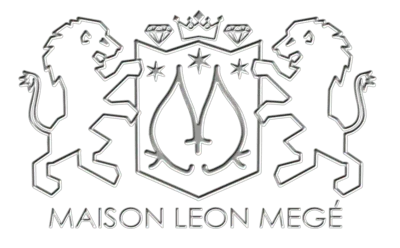The meteoric rise of the synthetic diamond market – which began as a novelty – has become an unprecedented surge that eats at the value and image of natural diamonds. Consumers have happily embraced low-cost, mass-produced lab-grown substitutes for rare, high-value natural diamonds. In less than a decade, lab-grown diamonds have risen from having a marginal market share to accounting for more than 20% of global jewelry sales.
Diamond’s scarcity is a virtue that evaporates the very moment they are plentiful. The glut of nearly worthless lab-grown diamonds has arrived, filling the niche vacated by Moissanite and Cubic Zirconia.

Lab-grown diamonds are identical to those found in nature. Both have the same physical, chemical, and optical properties, distinguishable only by strenuous gemological testing. Lab-grown diamonds offer bargain prices and an unlimited supply, but they lack the rarity and historical significance valued in natural diamonds.
Natural diamonds are mined in the wild around the globe, while lab-grown diamonds are cultivated in factories. In 1954, Howard Tracy Hall, who synthesized the first artificial diamond at the GE lab in Schenectady, NY, was rewarded with a $10 U.S. savings bond for his invention. It took forty years to perfect the process of producing gem-quality, colorless material suitable for jewelry.
We offer CERTIFIED lab-grown diamonds of any size at wholesale prices
We supply certified lab-grown diamonds. A lab-grown option will allow you to afford a much larger diamond. We are trendsetters pioneering the use of lab-grown diamonds in bespoke precision-forged jewelry. The relentless technological progress that brought us Veg-O-Matic and Peeps eyeglass cleaners has brought us the ultimate miracle of frugality.
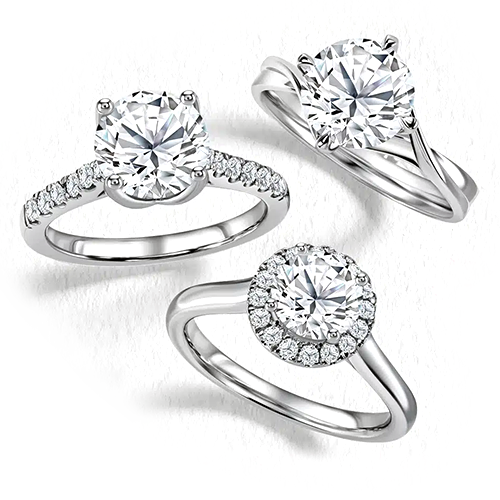

How to tell the difference?
The lab-grown diamonds are authentic; even a veteran gemologist cannot distinguish them from those spat out by volcanoes. Unlike lab-grown rubies and sapphires, synthetic diamonds don’t have noticeable tell-tale inclusions. Just as in-vitro children cannot be distinguished from those born through physical relationships. Only the technologically advanced and costly equipment used by gem labs can separate them.
Are lab-grown diamonds ecologically clean?
The myth of lab-grown diamonds’ “sustainability” or “eco-friendliness” is perpetrated by the producers. Lab-grown diamonds are “green,” which is achieved by painting the machinery with green paint (see illustration). All jokes aside, most factories are located in countries with little regard for the environment. The immense heat and diabolical pressure needed to produce a one-carat diamond are compared to the energy of a volcanic eruption. The energy required to synthesize a diamond can exceed 1,000 kWh per carat, depending on the production method. That does not chime well with false claims about zero carbon footprint. To learn more, watch the 2022 documentary Nothing Lasts Forever.
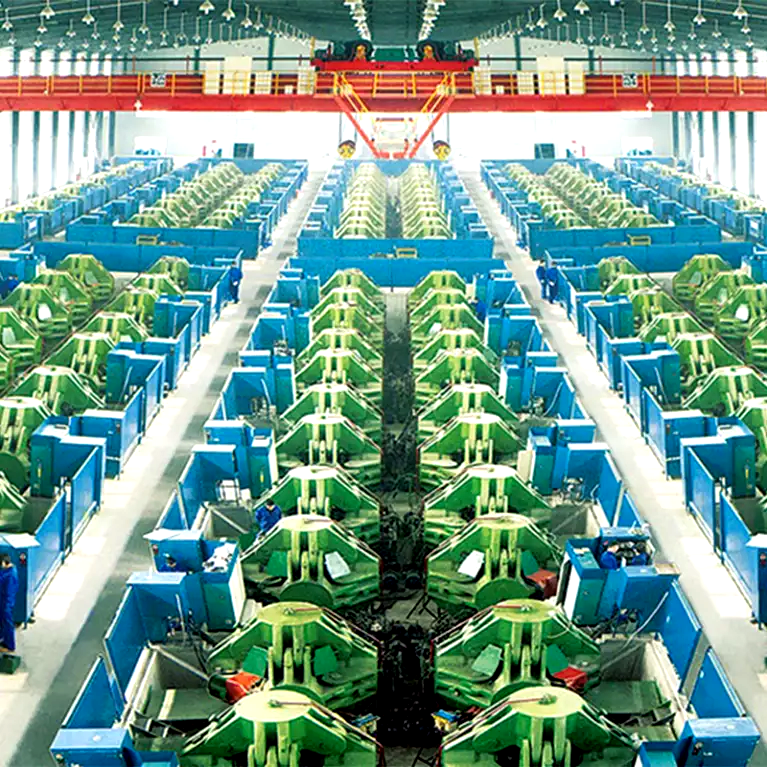

What do lab-growns cost?
Lab-grown diamonds are priced at a small fraction of their natural equivalent. From May 2023 to May 2025, the price of a top-grade, two-carat lab-grown diamond dropped by 50%, while the price of its natural counterpart remained relatively stable, reflecting the scarcity of natural diamonds.
The Gemological Institute of America (GIA) stopped using the color/clarity scale to describe lab-grown diamonds, distinguishing them from natural diamonds using descriptive terms instead. There are only two categories — premium or standard — which are defined by a combination of metrics related to color, clarity, and finish.
Other labs are moving away from grading lab-grown diamonds. In 2025, the Belgian lab HRD Antwerp stopped issuing certificates for loose synthetic diamonds.
Fancy-colored lab-grown diamonds
Lab-grown diamonds are created in a wider range of colors than natural diamonds. This is because the diamond color, determined by the impurities present in its crystal structure, can be controlled during the process, allowing for the creation of a rainbow assortment of lab-grown diamonds.
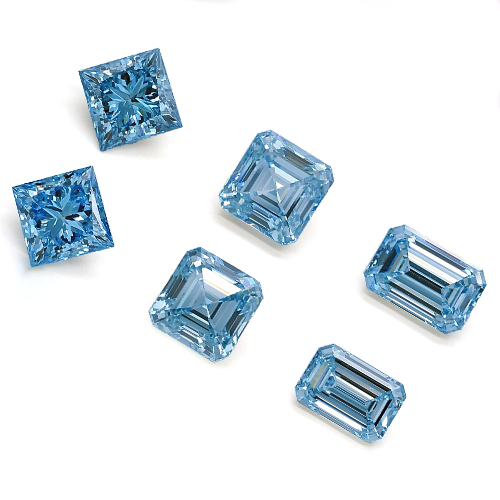

Are lab-grown diamonds romantic?
Would you give the love of your life a bouquet of artificial flowers? That is what a lab-grown diamond is. “Romantic” feelings are a manifestation of attraction and affection in a passionate and often irrational manner. An attempt to save money on a symbol of eternal love, such as a diamond, is hardly a romantic gesture.
How to turn a lock of hair into a diamond
Any organic matter can be turned into a lab-grown diamond. Some couples use their hair to create a diamond.
The hair is turned into a carbon powder using acid solvents and placed into a furnace, where it is heated to extremely high temperatures. This process transforms the carbon into graphite powder, which is then converted into a crystal under a pressure of 200 atmospheres and a temperature of 2,700°F.
Does it harm the environment? You bet it does! But how romantic – out of millions of carbon atoms making up a diamond, a few dozen came from your combined hair? Some ethical questions remain unanswered. For example, should you disclose to your new partner that it was made with your ex’s hair?
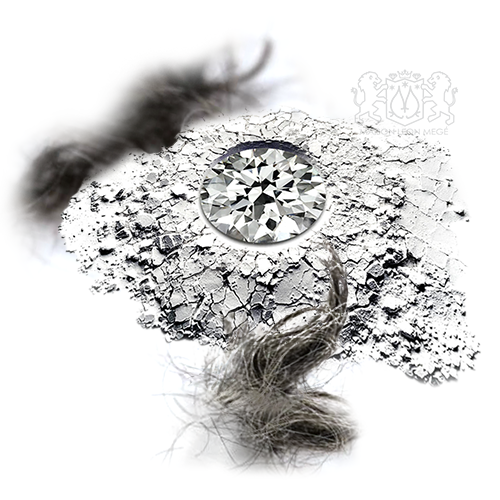
Diamonds from Tequila?
Researchers at Mexico’s University of Nueva Leon near Monterrey found that Tequila, the country’s national drink, produced a diamond film when heated under pressure. Google it if you don’t believe it. We can imagine the rigorous scientific effort by the heroic researchers who probably took many shots of 80% proof Tequila Blanco, which requires a short aging process. The late-night tests confirmed that the drink crystallized into a diamond-like structure. On the other hand, a breakthrough cancer drug created in Mexico from Corona beer turned out to be a hoax.
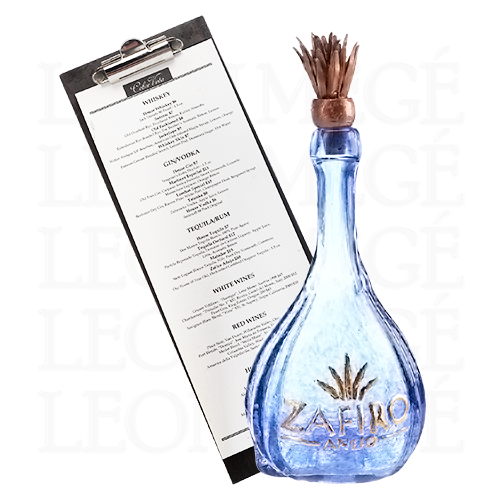
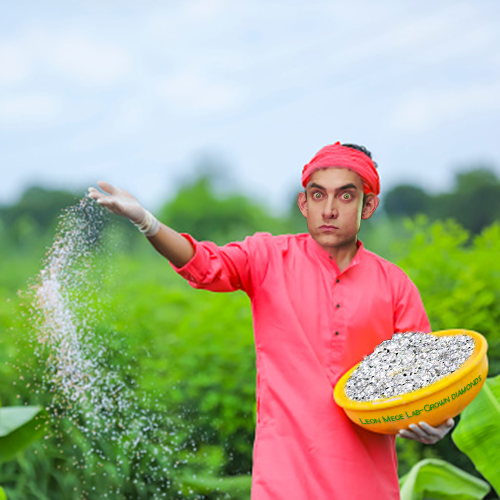
Growing diamonds
Visually and physically, lab-grown diamonds are identical to diamonds extracted from the ground. The crystal growth is induced by immense heat and pressure, similar to natural conditions and processes inside the Earth. Layer by layer, carbon molecules are deposited on a diamond seed, and theoretically, it can grow to any size. For practical purposes, their growth is limited because huge diamonds have no practical purpose. However, in the future, when there are diamond doorknobs, diamond desk lamps, and even diamond windows, the ginormous lab-grown diamonds might become useful again.
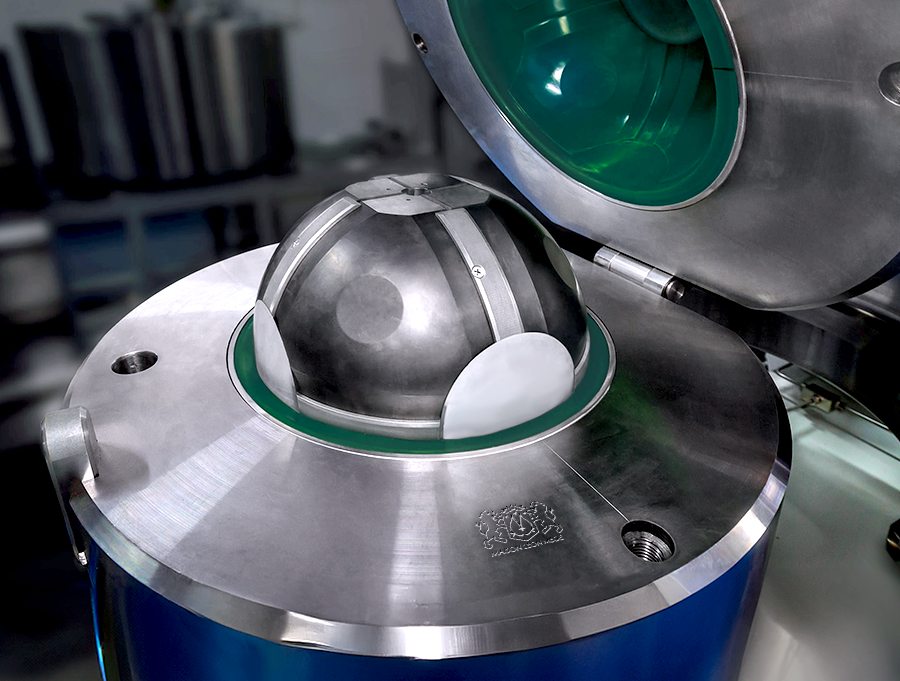
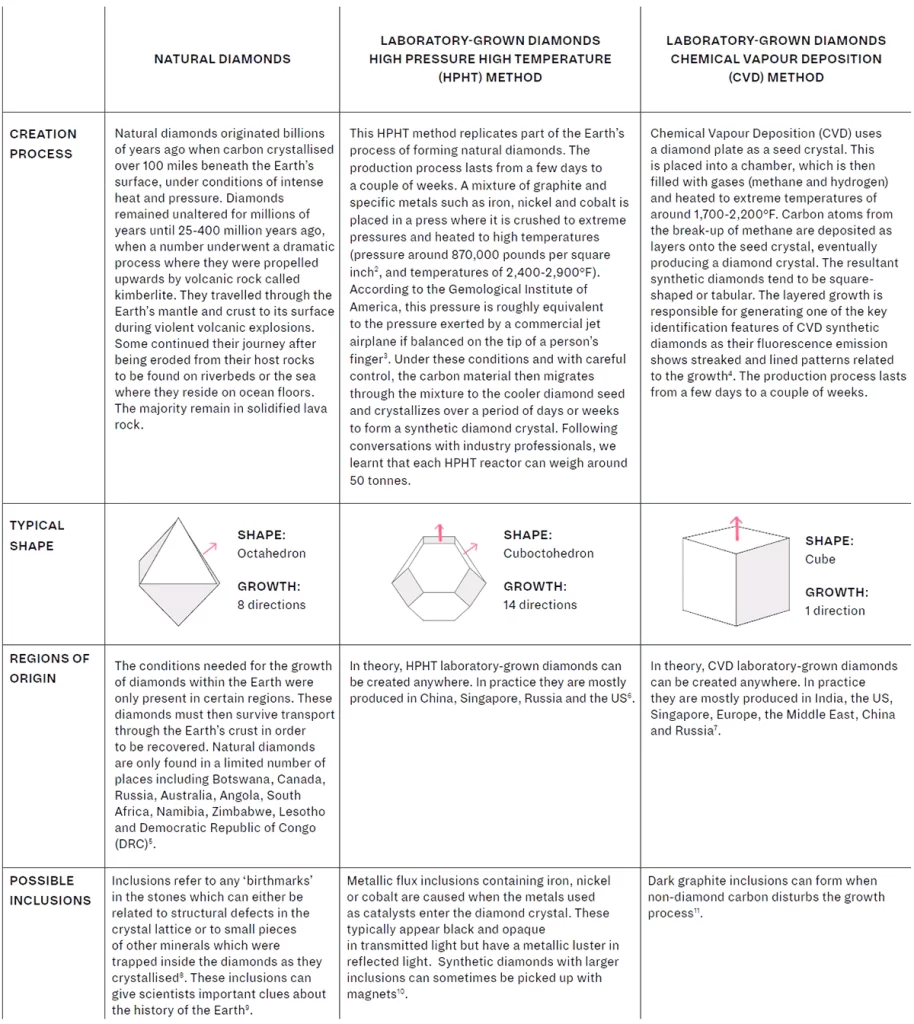
Blue Nuance diamonds
So-called Blue Nuance diamonds are some HPHT-grown diamonds with faint blue tints. Rarely found in nature, the blue tint results from the element Boron impregnating the crystal structure. The HPHT process uses boron as a catalyst and helps clear the nitrogen. Any noticeable tint, whether yellow, green, brown, or blue, can affect the diamond’s appearance and color grade. But unlike brown, gray, or yellow tints not mentioned in the lab report, the blue tint can be commented as “faint blue.” The bluish undertone typically lowers the color grade, which makes Blue Nuance diamonds more affordable. These stones often appear better because blue cancels out the yellow tint in stones below H in color.
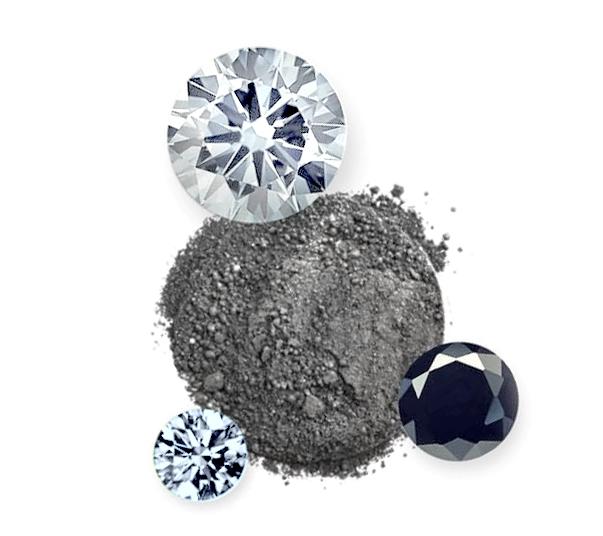
The lab-grown industry despises the term "synthetic." They insist on the term "lab-grown," which invokes peaceful green pastures where diamonds are roaming free, fattening up on organically grown graphite. What causes more harm to nature, mining, or synthesizing, is a subject for debate.
Before the 1800s, diamonds were so rare only kings and queens were lucky enough to wear them. But things changed. Despite what the diamond industry says now, the world is not running out of natural diamonds. The price of natural diamonds is kept artificially high by DeBeers. This monopoly has succeeded in controlling the diamond market for over two centuries. DeBeers and Alrosa, the Russian diamond mining monopoly, keep the supply of raw materials scarce and prices artificially high. DeBeers learned that diamonds are forever the hard way because every diamond ever found is still with us.
The Lonsdaleite - a rare hexagonal form of diamond, harder and stronger than the diamond itself is found in meteorites. Supposedly, Lonsdaleite formed out of supercritical fluid at high temperatures and moderate pressures in meteorites. In the process, it preserved the structure of the pre-existing graphite. Later, a diamond partially replaced Lonsdaleite as the environment cooled and the pressure decreased. The finding of Lonsdaleite could revolutionize industrial diamond manufacturing.
HPHT diamonds are more expensive to produce than CVD diamonds. However, there is absolutely no difference as far as the consumer is concerned.
HPHT is an acronym for High-Pressure High-Temperature, which is a process of subjec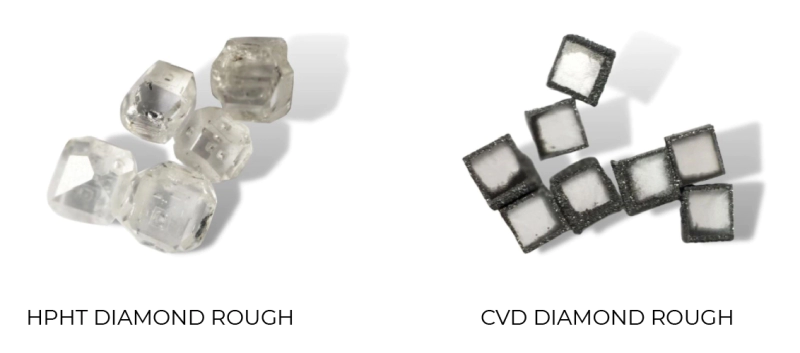 ting carbon fuel to extreme pressure and temperature to turn it into a diamond crystal. CVD stands for Chemical Vapor Deposition, where superheated gas is used to stimulate and grow a small diamond "seed" crystal into a full-sized diamond.
ting carbon fuel to extreme pressure and temperature to turn it into a diamond crystal. CVD stands for Chemical Vapor Deposition, where superheated gas is used to stimulate and grow a small diamond "seed" crystal into a full-sized diamond.
